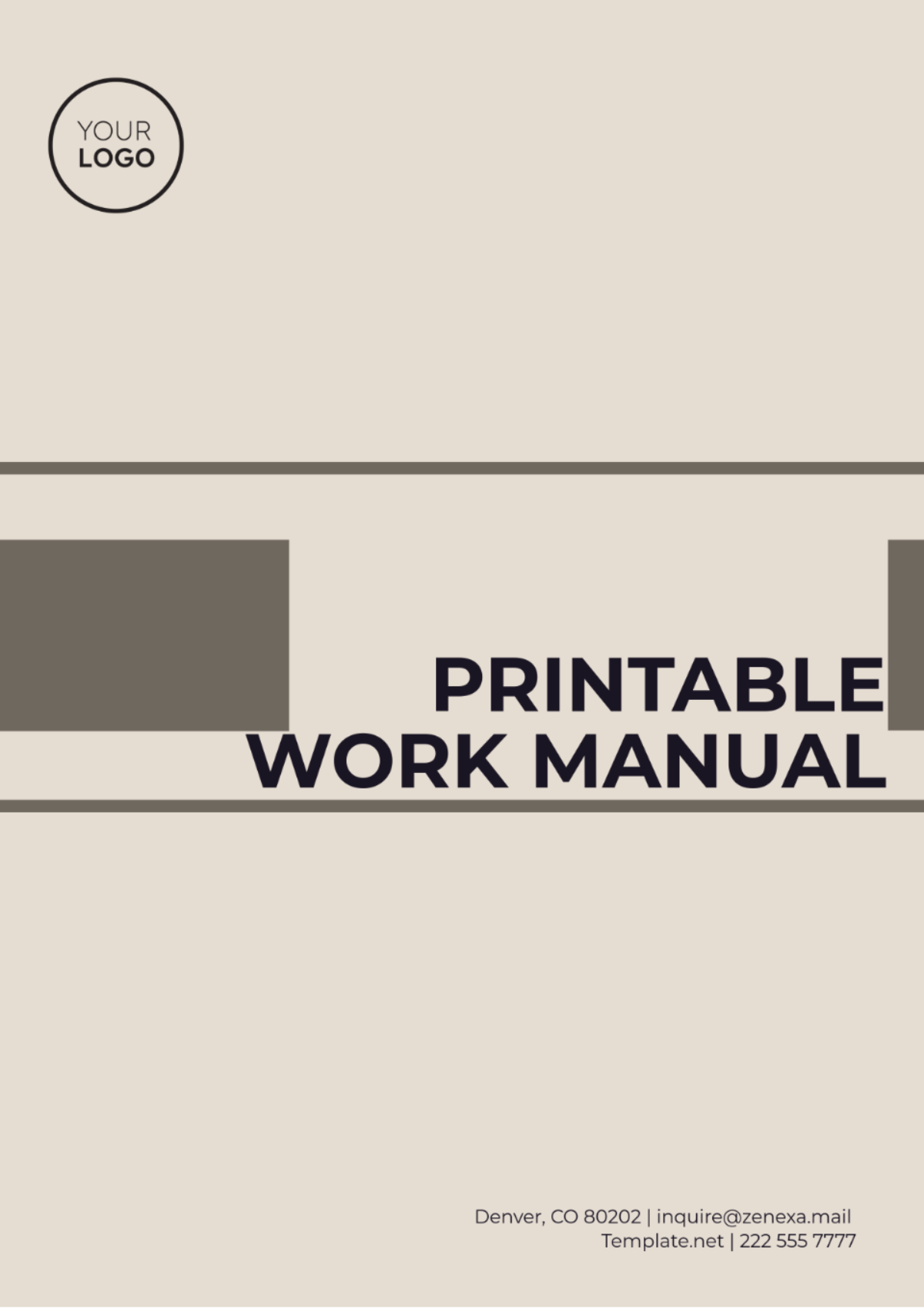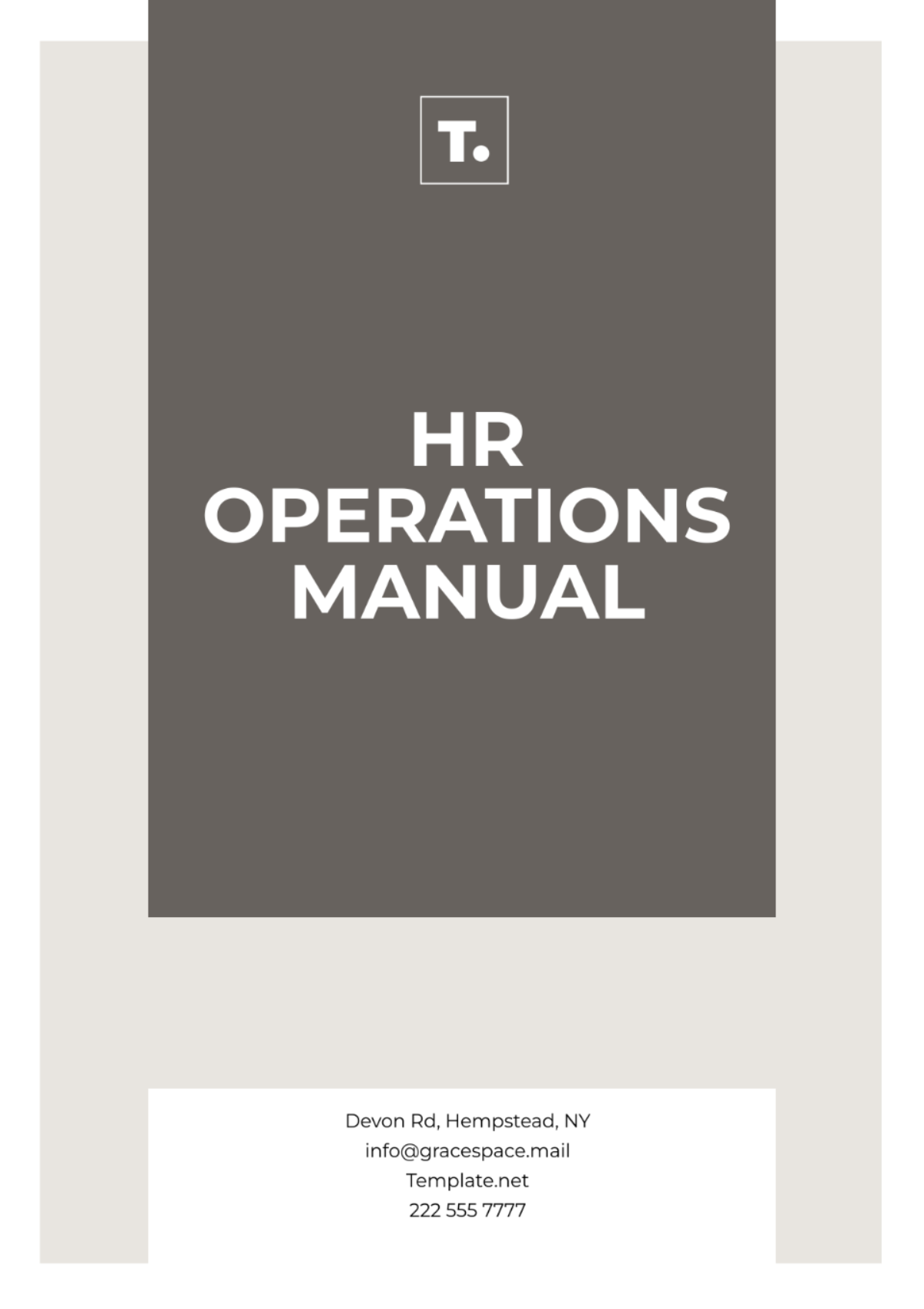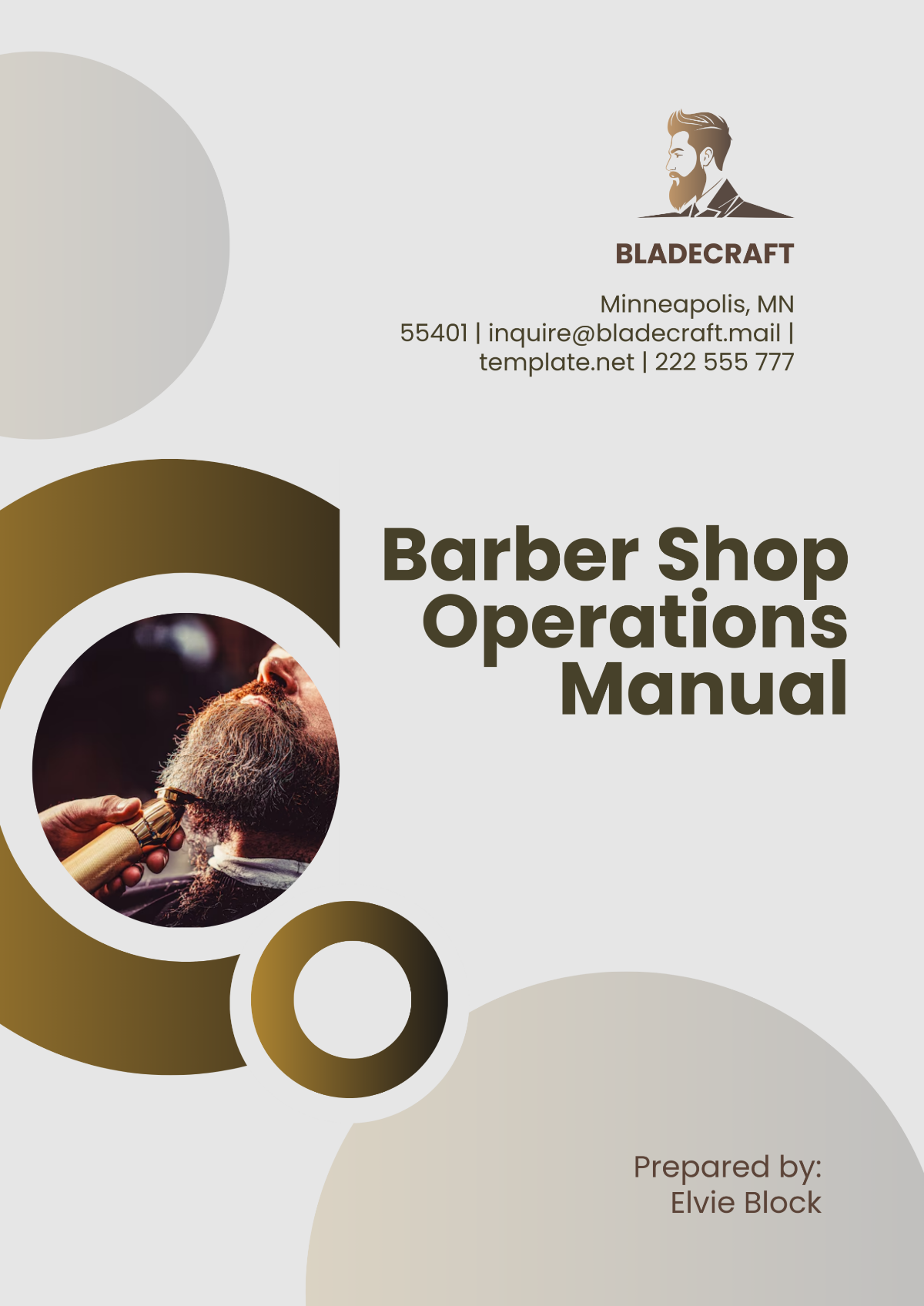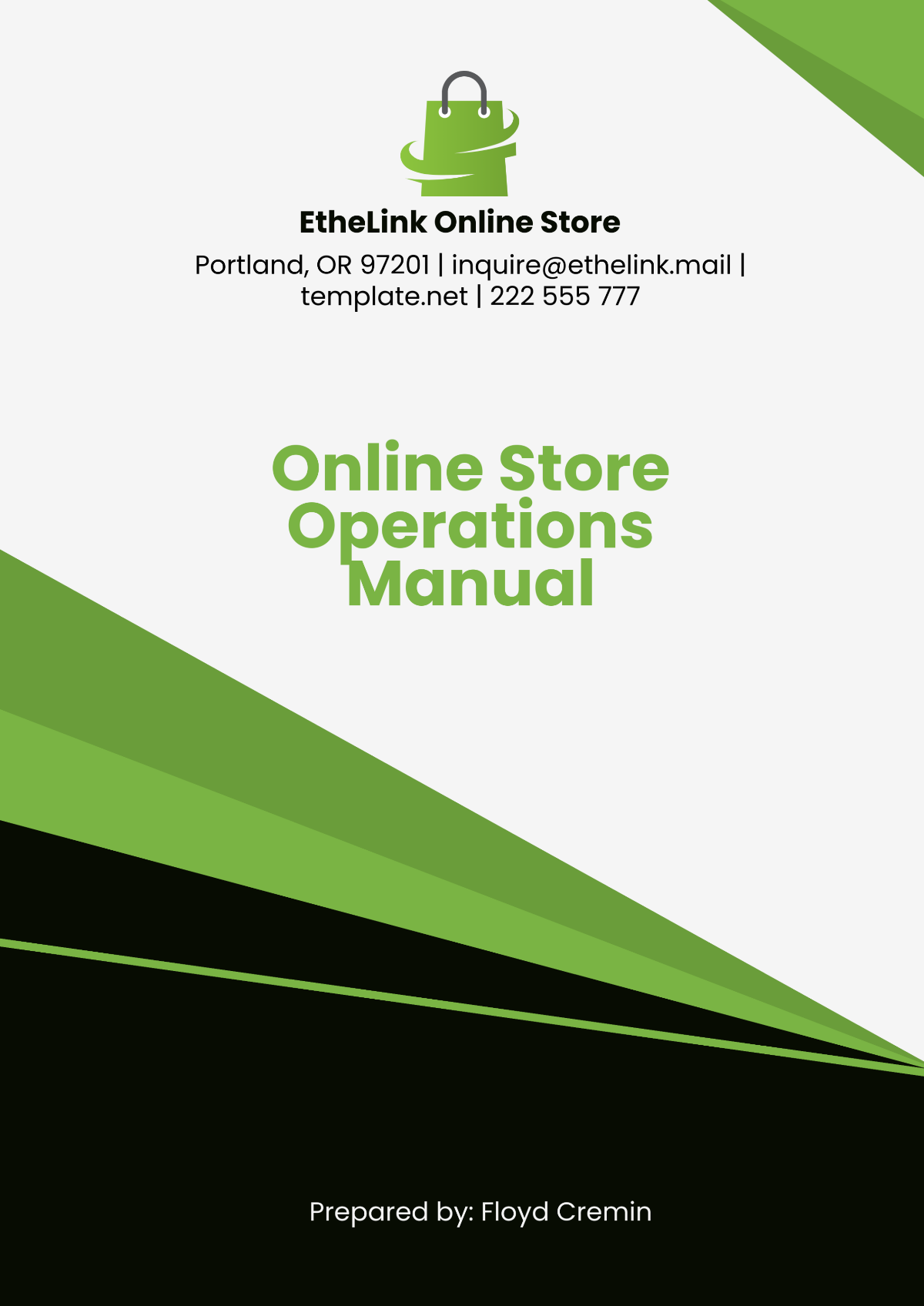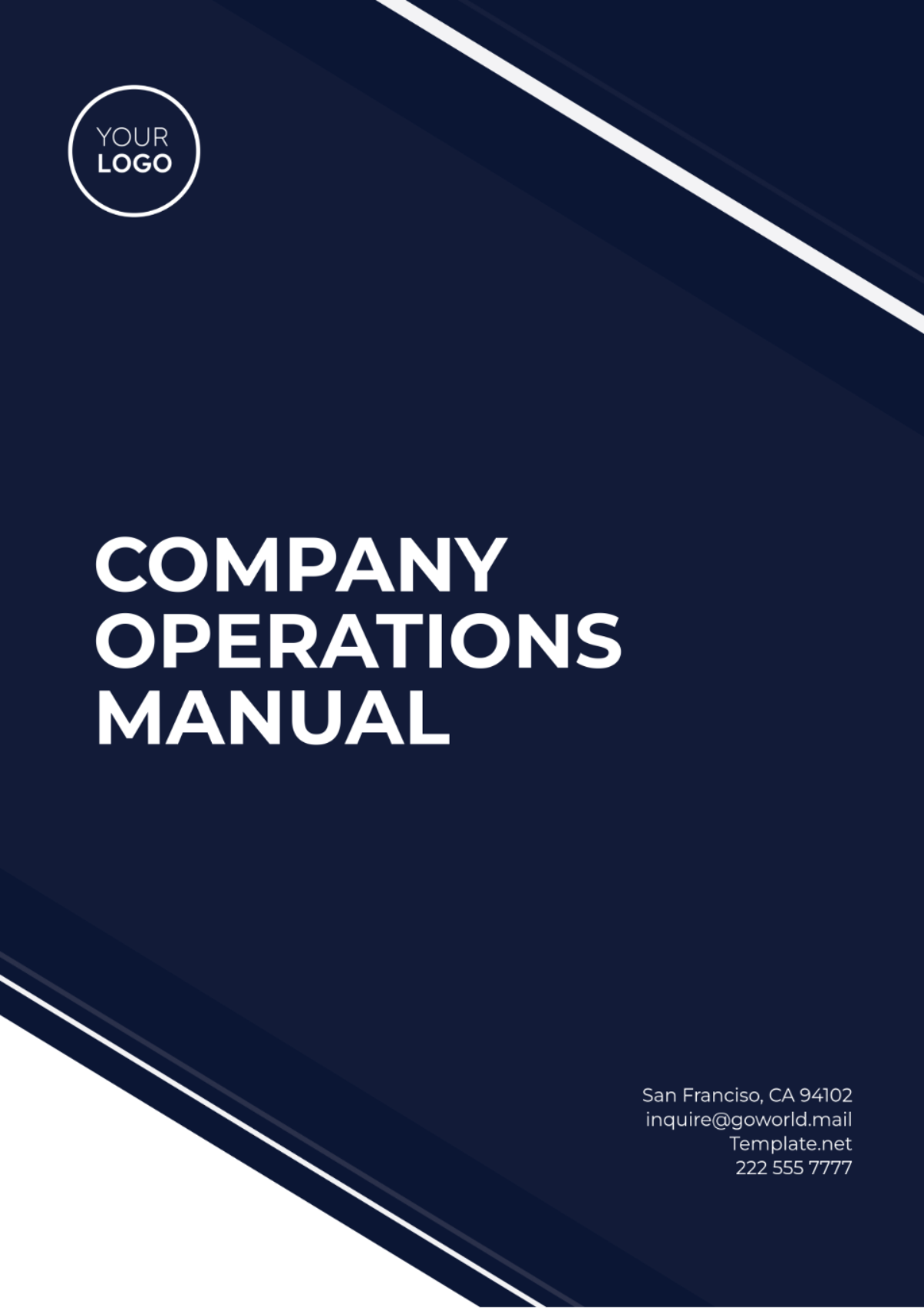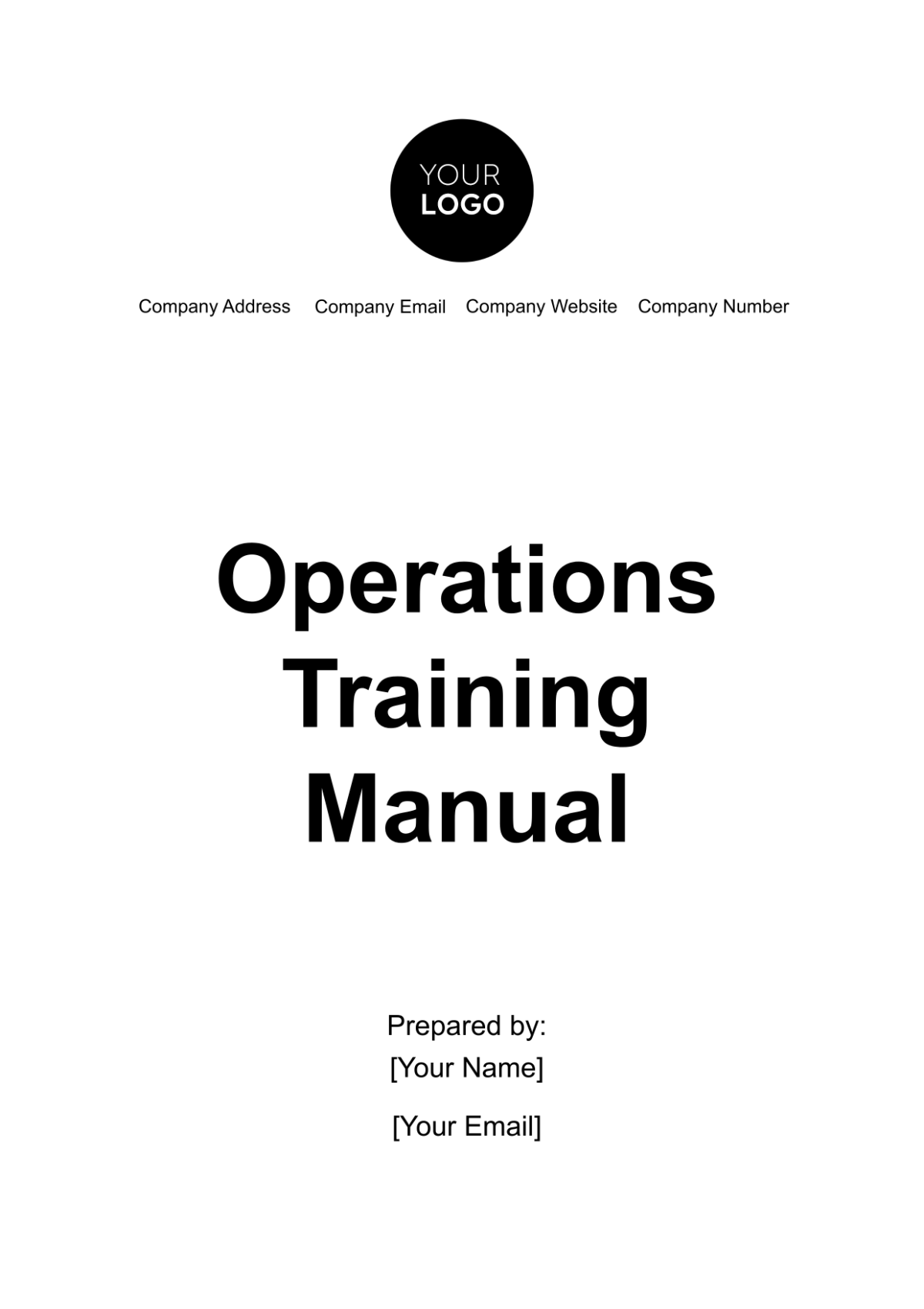EMPLOYEE OPERATIONS MANUAL
Prepared by: | [YOUR NAME] |
|---|---|
Company: | [YOUR COMPANY NAME] |
Department: | [YOUR DEPARTMENT] |
Date: | [DATE] |
I. Introduction
In this section, provide an overview of the Employee Operations Manual and its importance in guiding employees on various aspects of their roles within the organization. Explain the purpose of the manual and how it serves as a reference guide for employees to understand company policies, procedures, and expectations.
II. General Policies and Procedures
A. Code of Conduct
Compliance with Laws and Regulations:Employees are expected to adhere to all applicable laws, regulations, and ethical standards in the performance of their duties. This includes but is not limited to.
Confidentiality and Data Security: Employees must maintain the confidentiality of company information and customer data at all times. Unauthorized disclosure of sensitive information may result in disciplinary action.
B. Attendance and Punctuality
Work Hours: Employees are required to adhere to their designated work hours as outlined in their employment contracts or agreements. Any deviations from regular work hours must be approved by.
Absence Reporting: In the event of absence due to illness, emergencies, or other reasons, employees must notify their immediate supervisor or the HR department as soon as possible.
III. Human Resources Policies
A. Recruitment and Hiring
Equal Employment Opportunity: [YOUR COMPANY NAME] is committed to providing equal employment opportunities to all qualified individuals without regard to.
Recruitment Process: The recruitment process at [YOUR COMPANY NAME] involves several stages, including job posting, resume screening, interviews, and reference checks.
B. Performance Management
Performance Reviews:Performance reviews are conducted annually to assess employees' performance, provide feedback, and set goals for professional development.
Training and Development: [YOUR COMPANY NAME] offers various training and development programs to enhance employees' skills and competencies.
IV. Workplace Health and Safety
A. Occupational Health and Safety Policy
Safety Responsibilities: All employees are responsible for maintaining a safe and healthy work environment by following established safety procedures and protocol.
Reporting Hazards: Employees are encouraged to report any workplace hazards, accidents, or near-misses to their supervisor or the designated safety officer.
B. Emergency Procedures
Evacuation Plan
In the event of an emergency requiring evacuation, employees must follow the evacuation plan outlined in this manual.
First Aid and Medical Assistance
[YOUR COMPANY NAME] provides first aid kits and trained first aid responders to handle medical emergencies in the workplace.
V. IT and Security Policies
A. Information Security
Data Protection
Employees are responsible for safeguarding company data and information from unauthorized access, disclosure, or misuse.
Password Security
Employees must create strong passwords for accessing company systems and accounts and should never share their passwords with anyone.
B. Acceptable Use of Technology Resources
Internet and Email Usage
Company-provided internet and email services are to be used for business purposes only, and employees must adhere to acceptable use policies..
Software and Hardware Usage
Employees must use company-provided software and hardware resources in accordance with licensing agreements and usage policies.
VI. Employee Benefits and Policies
A. Leave Policies
Vacation Leave: Employees are entitled to [insert details about vacation leave entitlements and procedures].
Sick Leave: Employees may take sick leave when they are ill or unable to perform their duties due to medical reasons.
B. Employee Assistance Programs
[YOUR COMPANY NAME] offers employee assistance programs (EAPs) to provide support and resources for employees facing personal or work-related challenges.
VII. Performance Management
A. Performance Evaluation
Performance Review Process:
Employees will undergo regular performance evaluations conducted by their supervisors or managers.
Goal Setting and Feedback
Employees will participate in goal-setting exercises and receive ongoing feedback to support their professional development.
B. Recognition and Rewards
Employee Recognition Programs: [YOUR COMPANY NAME] recognizes outstanding performance and contributions through employee recognition programs.
Rewards and Incentives: Employees may be eligible for rewards and incentives based on their performance and achievements.
VIII. Professional Development
A. Training and Development Opportunities
Training Programs: [YOUR COMPANY NAME] offers various training programs and opportunities for employees to enhance their skills and knowledge.
Continuing Education: Employees are encouraged to pursue continuing education and professional development activities to support their career growth.
B. Career Advancement
Career Pathways: Employees will have access to career advancement opportunities within [YOUR COMPANY NAME] through internal promotions and transfers...Mentorship and Coaching.
[YOUR COMPANY NAME]provides mentorship and coaching programs to support employees in their career development journey.
IX. Employee Engagement and Wellness
A. Employee Engagement Initiatives
Employee Engagement Surveys: [YOUR COMPANY NAME] conducts regular employee engagement surveys to gather feedback and insights from employees.
Employee Engagement Events: [YOUR COMPANY NAME] organizes various employee engagement events and activities to foster team collaboration and morale.
B. Wellness Programs
Health and Wellness Initiatives: [YOUR COMPANY NAME] promotes employee wellness through health and wellness programs.
Work-Life Balance:Employees are encouraged to maintain a healthy work-life balance to support their overall well-being and productivity.
X. Communication and Collaboration
A. Communication Channels
Internal Communication Tools: [YOUR COMPANY NAME] provides various internal communication tools and platforms to facilitate effective communication among employees.
Team Collaboration Tools:Employees have access to team collaboration tools to streamline communication and collaboration on projects and tasks.
B. Meetings and Collaboration
Meeting Guidelines: [YOUR COMPANY NAME] establishes guidelines for conducting effective meetings, including agendas, participation, and follow-up actions.
Collaboration Spaces: Employees can utilize designated collaboration spaces or virtual platforms to collaborate with colleagues on projects and initiatives.
XI. Compliance and Ethics
A. Code of Conduct
Code of Ethics: [YOUR COMPANY NAME] maintains a code of ethics that outlines expected standards of behavior and ethical conduct for all employees.
Compliance Policies: Employees are required to adhere to [YOUR COMPANY NAME] compliance policies and regulations to ensure legal and ethical conduct.
B. Reporting Procedures
Reporting Misconduct: Employees are encouraged to report any instances of misconduct or violations of company policies through established reporting procedures.
Whistleblower Protection: [YOUR COMPANY NAME] provides whistleblower protection to employees who report misconduct or unethical behavior in good faith.
XII. Conclusion
The Employee Operations Manual serves as a comprehensive guide for employees to understand [YOUR COMPANY NAME] policies, procedures, and expectations. By adhering to the guidelines outlined in this manual, employees can contribute to a positive work environment, uphold company values, and achieve their professional goals. For any questions or clarifications regarding the content of this manual, please contact [YOUR DEPARTMENT] at [YOUR EMAIL]



